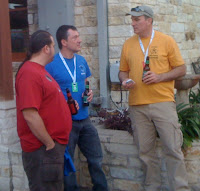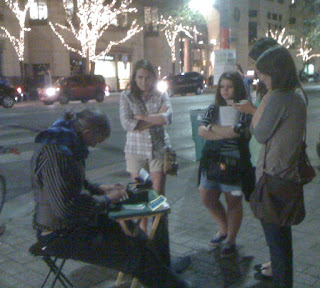I told him how much I
wanted to be paid if I was successful.
He locked me in his business on Friday night. … When he came back on Sunday, I had the
solution wrapped and ribboned.
The
folks at Code.Org created a video with
Bill Gates, Mark Zuckerberg and others, encouraging kids to learn to program
computers. That much is laudable. Disgracing the video, with an odd
anti-capitalist mentality, is a segment by Drew Houston of Dropbox about how
much fun it is to be a programmer. (View
from the 3:00 minute to the 4:00 minute mark of this 5:44 announcement.) Was it the fun of 48 hours in three days to
solve a tough problem? No, it is the fun
of skateboarding in the office, playing ping pong, and chatting with your
fields. The segment also touts free food
including gourmet cooking three times a day.
But where do these come from, if no one works? Blank out. (Firms are not launched with perquisites, benefits, and privileges--but more on that in another post.)
From
the 3:17 mark: “… to get the very best people we try to make the office as
awesome as possible." Fantastic
chef, free food, breakfast, lunch, and dinner, free laundry, snacks, even places
to play, and scooters. “All these interesting things around the office: places
where people can play or relax, or goto
think or play music or be creative.”
Back in the 80s when the
concept of a “Dot.Com Meltdown” was inconceivable on several levels, working as a technical writer for a software
start-up I was paid a salary of $400 per week for a 40-hour week. I would come
in on my own time on Saturdays and find most, if not all, of the four
programmers there, also. This was
neither the first nor the last time that my co-workers and I at that company or
for some previous or subsequent job worked “for free.”
It was not unusual.
Computer programming was the quintessential brain work that people did because
they loved it. As well as we were paid,
getting paid was a bonus., a secondary consequence. Thus, hackers created Open Source software
and formalized it with the Open Source Foundation. Unix became Linux and GNU: Gnu is Not
Unix. Freeware and shareware
abounded. Companies made money selling
it. Individuals made money creating it
and marketing it. But we did it because
the "fun" - the ecstasy of creation - was in the work.
“But first, I want you to
think and tell me what made me give years to this work. Money? Fame? Charity?
Altruism?... You see, I’m never concerned with my clients, only with their
architectural requirements. I consider these as part of my building’s theme and
problem, as my building’s material—just as I consider bricks and steel. Bricks
and steel are not my motive. Neither are the clients. Both are only the means
of my work. Peter, before you can do things for people, you must be the kind of
man who can get things done. But to get things done, you must love the doing,
not the secondary consequences. The work, not the people. Your own action
…” (Howard Roark in Ayn Rand’s The Fountainhead, Plume edition, 1994; page
604)
Continues below click "Read More"...
(A jump lead walks into a bar.
The bartender says, "I'll serve you, but don't try to start anything.")
The bartender says, "I'll serve you, but don't try to start anything.")























